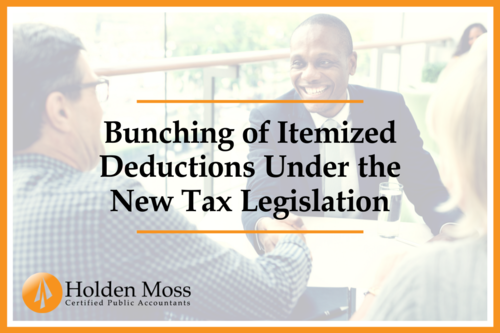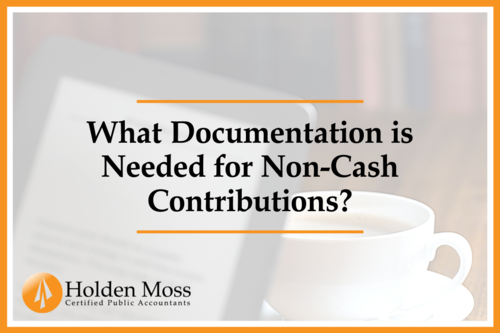Important Tax Dates & Deadlines
Updated for the tax year 2021.
Overview
The IRS has outlined important tax deadlines in this calendar. Dates and details are listed below for your convenience. Make sure you add pertinent dates to your calendar.
We have also included announcements regarding tax relief for the victims of the recent severe storms and tornadoes, as well as COVID-19 updates.
Schedule an appointment with us to go over any questions you may have and start your tax plan today.
Deadlines by Date
Jan. 10, 2022:
Deadline for employees who earned more than $20 in tips income in December 2021 to report this income to their employers on Form 4070
Jan. 18, 2022:
Deadline to pay the fourth-quarter estimated tax payment
for the tax year 2021
Jan. 31, 2022:
Deadline for employers to mail out W-2 Forms
to their employees and for businesses to furnish 1099 Forms reporting non-employee compensation, bank interest, dividends, and distributions from a retirement plan
Jan. 31, 2022:
Deadline for financial institutions to mail out Form 1099-B
relating to sales of stock, bonds, or mutual funds through a brokerage account, Form 1099-S
relating to real estate transactions; and Form 1099-MISC
, if the sender is reporting payments in boxes 8 or 14
Jan. 31, 2022:
Deadline for catching up on unpaid fourth-quarter estimated taxes
without additional penalties by filing 2021 tax returns
Feb. 10, 2022:
Deadline for employees who earned more than $20 in tip income in January 2022 to report this income to their employers
Feb. 28, 2022:
Deadline for businesses to mail Forms 1099 and 1096
to the IRS
March 1, 2022:
Deadline for farmers and fishermen to file individual income tax returns
March 10, 2022:
Deadline for employees who earned more than $20 in tip income in February 2022 to report this income to their employers
March 15, 2022:
Deadline for corporate tax returns ( Forms 1120
, 1120-A
, and 1120-S
) for the tax year 2021, or to request an automatic six-month extension of time to file ( Form 7004
) for corporations that use the calendar year as their tax year, and for filing partnership tax returns ( Form 1065
) or to request an automatic five-month extension of time to file ( Form 7004
)
March 31, 2022:
Deadline for businesses to e-file Forms 1099 and 1096 to the IRS, except Form 1099-NEC
April 11, 2022:
Deadline for employees who earned more than $20 in tip income in March 2022 to report this income to their employers
April 18, 2022:
Deadline to file individual tax returns ( Form 1040
) for the tax year 2021 or to request an automatic extension ( Form 4868
) for an extra six months to file your return and for payment of any tax due
April 18, 2022:
Deadline for household employers who paid $2,200 or more in wages in 2021 to file Schedule H for Form 1040
April 18, 2022:
Deadline for first-quarter estimated tax payments for the 2022 tax year
May 10, 2022:
Deadline for employees who earned more than $20 in tip income in April 2022 to report this income to their employers
June 10, 2022:
Deadline for employees who earned more than $20 in tip income in May 2022 to report this income to their employers
June 15, 2022:
Deadline for second-quarter estimated tax payments for the 2022 tax year
June 15, 2022:
Deadline for U.S. citizens living abroad to file individual tax returns or file Form 4868
for an automatic four-month extension
July 11, 2022:
Deadline for employees who earned more than $20 in tip income in June 2022 to report this income to their employers
Aug. 10, 2022:
Deadline for employees who earned more than $20 in tip income in July 2022 to report this income to their employers
Sept. 12, 2022:
Deadline for employees who earned more than $20 in tip income in August 2022 to report this income to their employers
Sept. 15, 2022:
Deadline for third-quarter estimated tax payments for the 2022 tax year
Sept. 15, 2022:
Final deadline to file corporate tax returns for the tax year 2021, if an extension was requested ( Forms 1120
, 1120-A
, 1120-S
)
Oct. 11, 2022
Deadline for employees who earned more than $20 in tip income in September 2022 to report this income to their employers
Oct. 17, 2022:
Final extended deadline to file individual tax returns for the year 2021 ( Form 1040
)
Oct. 17, 2022:
Deadline for taxpayers who earned $69,000 or less in adjusted gross income (AGI) for the tax year 2021 to use Free File
to prepare and file their returns
Nov. 10, 2022:
Deadline for employees who earned more than $20 in tip income in October 2022 to report this income to their employers
Dec. 12, 2022:
Deadline for employees who earned more than $20 in tip income in November 2022 to report this income to their employers
What If You Can’t Pay Your Taxes?
Can’t pay now? Go to IRS.gov/Payments for more information about your options.
You could apply for an online payment agreement ( IRS.gov/OPA ) to meet your tax obligation in monthly installments if you can’t pay your taxes in full. Once you complete the online process, you will receive an immediate notification of whether your agreement has been approved.
Another option is to use the Offer in Compromise Pre-Qualifier to see if you can settle your tax debt for less than the full amount you owe. For more information on the Offer in Compromise program, go to IRS.gov/OIC.
IRS Tax Relief Updates
Coronavirus Tax Relief
The Internal Revenue Service is offering tax help for individuals, families, businesses, tax-exempt organizations and others – including health plans – affected by coronavirus. Assistance Programs include Advance Child Tax Credit and continuing Third Round of Economic Impact Payments. See the agency's article for details.
Tax Relief for Victims of Arkansas Severe Storms and Tornadoes
The Internal Revenue Service announced on December 28th, 2021 that following the recent disaster declaration issued by the Federal Emergency Management Agency, affected taxpayers in certain areas will receive tax relief.
In addition, Victims of severe storms and tornadoes beginning December 10, 2021 now have until May 16, 2022, to file various individual and business tax returns and make tax payments. Learn more.
All information included in this article was sourced directly from IRS.gov.











